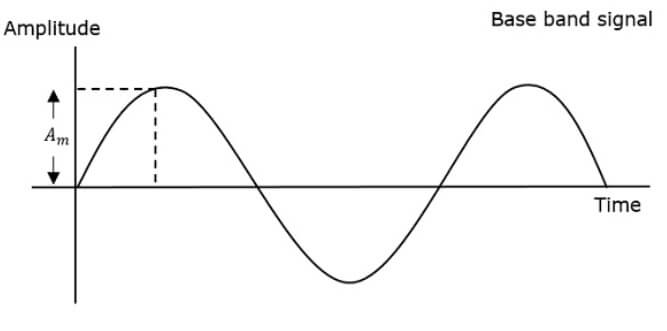Angle modulation has following advantages over amplitude modulation (AM):
- The amplitude of FM is constant. It is independent of depth of modulation. Hence transmitter power remains constant in FM whereas in FM it varies in AM.
- Since amplitude of FM is constant, the noise interference is minimum in FM. Any noise superimposing an amplitude can be removed with the help of amplitude limits. Whereas it is difficult to remove amplitude variations due to noise in AM.
- The depth of modulation have limitation in AM. But in FM the depth of modulation can be increased to any value by increasing the deviation. This does not cause any distortion in FM signal.
- Since guard bands are provided in FM, there is less possibility of adjacent channel interference.
- Since space waves are used for FM, the radius of propagation is limited to line of sight. Hence it is possible to operate several independent transmitters on same frequency with minimum interference.
- Since FM uses UHF and VHF ranges, the noise interference is minimum compared to AM which uses MF and HF ranges.

There are some disadvantages of FM compared to AM as follows :
- The bandwidth requirement of FM is much higher than that of AM.
- The FM transmitting and receiving equipment is more complex and costly.
- Since FM uses UHF and VHF range of frequencies, its area of reception is limited only to line of sight. This is much lower than area covered by AM.
Table shows the comparison between FM and AM |
|
| Amplitude Modulation | Frequency Modulation |
| Amplitude of the carrier is varied according to amplitude of modulation signal. | Frequency of the carrier is varied according to amplitude of the modulating signal, |
| AM has poor fidelity due to narrow bandwidth. | Since the bandwidth is large, fidelity is better. |
| Most of the power is in carrier hence less efficient. | All the transmitted power is useful. |
| Noise interference is more. | Noise interference is minimum. |
| Adjacent channel interference is present. | Adjacent channel interference is avoided due to wide bandwidth. |
| AM broadcast operates in MF and HF range. | FM broadcast operates in VHF and UHF range. |
| In AM only carrier and two sidebands are present. | Infinite number of sidebands of sidebands are present. |
| The transmission equipment is simple. | The transmission equipment is complex. |
| Transmitted power varies according to modulation index. | Transmitted power remains constant irrespective of modulation index. |
| Depth of modulation have limitation. It can not be increased above 1. | Depth of modulation have no limitation. It can be increased by increasing frequency deviation. |
Comparison between FM and PM
| Frequency Modulation | Phase Modulation |
| The maximum frequency deviation depends upon amplitude of modulating voltage and modulating frequency. | The maximum phase deviation depends only upon the amplitude of modulating voltage. |
| Frequency of the carrier is modulated by modulating signal. | Phase of the carrier is modulated by modulating signal. |
| Modulation index is increased as modulation frequency is reduced and vice versa. | Modulation index remains same if modulating frequency is changed. |
Actually in FM, when frequency is changed, phase is also varied. FM is basically obtained from phase modulation as we see next.
| Read More Topics |
| Tuned radio frequency receiver |
| Performance radio receiver |
| Permanent magnet synchronous motor |
| Modulation techniques for satellite link |





